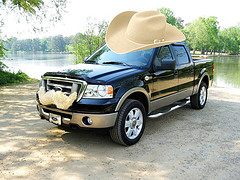
We closed the data collection phase of a project today. Most of the work we do here is focused on measuring and reporting on the reach, impact, and value of experiential marketing. Occasionally, we have the opportunity to go back to our roots and design a traditional market research study. I thought I’d tell you about this one in particular.
The Goal
The goal is to provide insight that will lead to the successful launch of a new product. We organized the research objectives into three groupings:
- The size and value of the potential market
- The propensity of that market to buy the product
- The price range that the market will bear
How To Size A Market
We size a market by first defining the target consumer, then measuring the prevalence of that consumer group in the U.S. For example, if we were looking to measure the size of a market for car mustaches and believed that male car owners ages 35 and older are the target market, we’d seek to measure the prevalence of this group in the overall U.S. population.
That is the percent of men (49%) over the age of 35 (40%) who own a car (70%). In this hypothetical we’d be left with 13.7% of the overall U.S. population (49% * 40% * 70% = 13.7%). If we assumed 300 million people in the US, the car mustache market would be 41.1 million people strong.
How To Value A Market
To value this market, we’d want to know how much this target segment spent on novelty items related to their car last year. Let’s say the average spend was $35/ year (e.g., fuzzy dice, neon rims, etc.). This would value the target market at $143.5 million annually. Not bad.
Propensity To Buy
We then want to describe the product idea without revealing the product itself. We want to get a measure of the target market’s likelihood to buy the product solution. The marketing and ad copy will test different angles that actually motivate the purchase of the product. We want to get a measure of propensity to buy under a scenario where the marketing get’s it right.
This information will give us a sense of the revenue the product could generate. This becomes a critical measure when fine-tuning marketing plans or judging when your effort will turn cash-flow positive.
How Much To Charge For A New Product
Finally, there is the question of how much they’ll pay. We’re a fan of the Van Westendrop Pricing Model. It’s four straightforward survey questions that end up giving you two price ranges. The first range tells you the amount you can charge to maximize profits. The second tells you the price you can charge that will maximize market share.
When you know your market’s size, who will buy, how often they will buy, and what you can charge them, you can clearly model out your product launch and define a to-market strategy.
Okay… enough talk. It’s time for us to crunch the numbers. We received 460 responses, and the data looks great. I can’t wait to see what the final report says. Neither can the business owners we’ll be reporting to.
